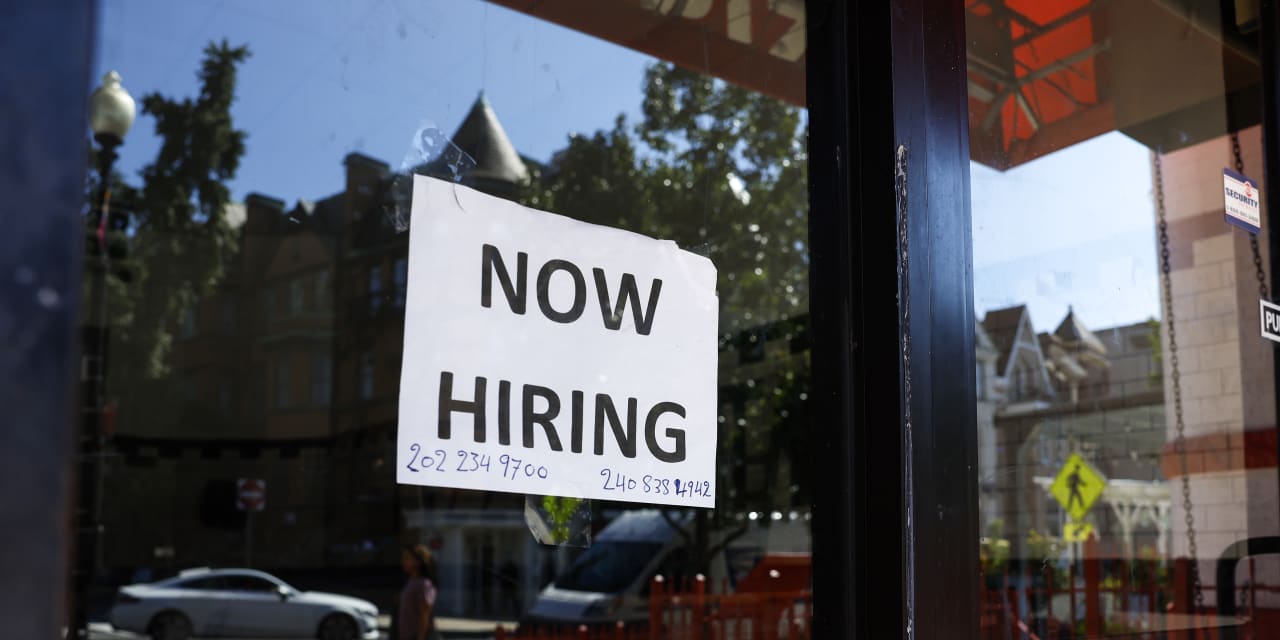Do you believe in fairy tales? Because August’s jobs report was just about as Goldilocks as you can get.
Yes, the
S&P 500
index barely budged on Friday in response to the data, but it finished the week up 2.50%, while the
Dow Jones Industrial Average
rose 1.43% and the
Nasdaq Composite
gained 3.25%.
Those gains make sense, given the numbers. U.S. government data on Friday showed a larger-than-expected gain of 187,000 nonfarm payrolls in August, but significant downward revisions for the previous two months totaling 110,000 fewer jobs than initially reported, putting the three-month average job growth near 150,000—below February 2020. The unemployment rate jumped to 3.8% from 3.5%, while the labor-force participation rate rose 0.2%, for its first increase since March. Even the monthly gain in average hourly earnings slowed, while average hours worked rose.
Put it all together and the picture is decidedly encouraging: The labor market continues to rebalance in a healthy direction. The U.S. economy is still adding jobs. The unemployment uptick was due to an increase in the labor supply, not mass layoffs. And, for employers, there are now more workers available per open positions, and wage pressures are abating. Even the Federal Reserve should be happy.
“If the economy can continue to expand and the labor market can cool at a slow pace, rather than at a rapid clip, then the Fed can afford to leave rates where they are and patiently wait for (current) higher rates to do their work,” writes Chris Zaccarelli, chief investment officer for Independent Advisor Alliance.
For stocks, the data and setup suggest more gains in the near term, at least through the September Fed meeting. Bond yields could drift lower as the market prices out Fed hikes, reversing more of August’s move higher, which weighed on stocks. The process has already begun: The yield on the two-year Treasury note closed at 4.87% on Friday, after starting the week at 5.05%.
“Investors now have more reason to think August’s surge in Treasury yields was an echo of 2022 and the last gasp of something old instead of the start of something new,” wrote David Russell, global head of market strategy at TradeStation, on Friday. “Continued easing in yields could help feed the Goldilocks narrative and comparisons to the 1994-95 soft landing.”
The next potential market-moving data will be the August consumer price index, to be released on Sept. 13, just before the Fed meeting. Investors and policy makers will be watching for confirmation that an easing labor market is showing up in the form of less pressure on inflation. Yes, it could still be a messy report—rallies in commodities prices over the summer may push up the headline CPI figure. But barring unpleasant surprises, the near-term direction for stocks remains up and to the right.
Write to Nicholas Jasinski at nicholas.jasinski@barrons.com
Read the full article here











Leave a Reply